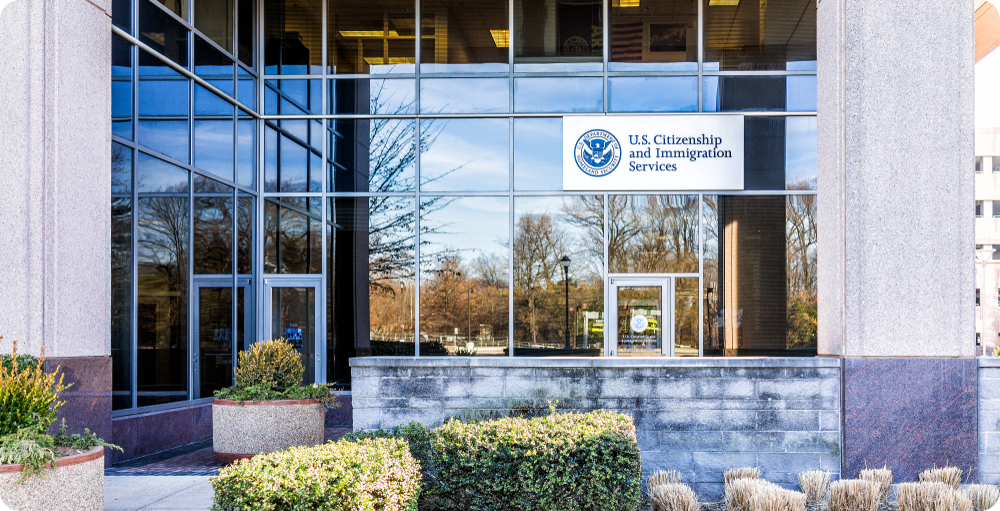IIUSA Executive Director Aaron Grau has made a list of objectives that the industry should aim to achieve now that the program has a runway of over five years: better processing times, engaging not just USCIS but the White House itself going forward, increased visa numbers, a congressional EB-5 caucus, and technical corrections to the legislation. Grau sees reauthorization as part of the program’s “maturity toward permanence” and advises “our next steps are critical.”
A measured yet reasonably optimistic leader, Grau outlines five objectives that his organization, IIUSA, and the industry itself should strive to achieve now that the Regional Center Program is back for the better part of a decade.
1. Better EB-5 processing times
According to Grau, reauthorization and reform means the program “should no longer suffer back-seat status.” He’s confident that federal powers are now invested in the program and want to see it succeed. To this end, he thinks the new climate offers a new opportunity to work with U.S. Citizenship and Immigration Services (USCIS) towards the goal the industry and investors have wanted for years — better processing times.
He doesn’t see this goal as a slam-dunk, but believes that IIUSA and other organizations, like the U.S. Chamber of Commerce, will have to work hard to push for improved petition processing times. But the “five-year runway” gives him hope that the industry has the time and stability to do so.
Given that USCIS has recently announced that it aims to improve processing and reduce backlogs overall, this goal seems realistic. The question we should ask is not can USCIS improve processing times, but by how much?
2. A dialogue with the White House
After starting with the reasonable goal of improved USCIS efficiency, Grau’s list becomes more ambitious: conversations with not just the Immigration Service but the White House itself. He cites Betsy Lawrence as a big reason to hope for this. Lawrence, who just weeks ago was the House Judiciary’s Committee’s chief immigration counsel, is now deputy assistant to the president and is influencing Biden’s immigration ideas.
Whether or not the upwardly moving Lawrence, whom Grau has the greatest respect for, can make EB-5 a priority to people surrounding the president, remains to be seen. But it’s nice to aim high.
3. More EB-5 visas
During the reauthorization debate and dialogue, much of the industry clamored for EB-5 visa relief in the form of increased numbers. Thanks to Grau’s diplomatic but reasonable disposition, the message we heard then was “now is not the time, but it will come.” Well, Grau is trying to stay true to this promise and now declares, “aside from petition processing times, increased visa numbers is the most critical stone left unturned.”
But any optimism for more visas should be tempered by a fact many of us should know and one that Grau acknowledges: “Many federal legislators consider visa numbers a political hot-potato.” He admits that when it comes to this aim, the industry has “less a foundation and more a sure foothold.” That’s code for “don’t get your hopes up too high.”
4. An EB-5 congressional caucus
The third of Grau’s uncertain ambitions is a caucus, a group of Congress members dedicated to a specific cause, to pursue the betterment of EB-5. He reminds us that most often a caucus has two chairs, one Democrat and one Republican; and he has specific Congressmen in mind for these roles: Representatives Fitzpatrick (R-PA-01) and Stanton (D- AZ-09), the individuals who introduced the House version of the Grassley-Leahy bill.
Grau believes such a caucus can focus on growing support for the program’s economic impact and may result in more visas and making the Regional Center Program permanent.
This sounds well and good, but since EB-5 has never been a priority of Congress and many senators and representatives don’t even understand the broad details of the program, don’t hold your breath waiting for this goal to materialize.
5. Technical corrections to the legislation
Grau bookends his list of five EB-5 goals with a very modest ambition: revise the legislation with a “handful of technical corrections that need our continued attention.” It seems fair to assume technical errors will be revised.
Conclusion
We can see better USCIS processing coming — the agency has officially said as much. But whether or not EB-5 can gain more visas, and the attention of the White House and other members of Congress going forward remains to be seen.
But even if the better part of Grau’s great wish list never becomes reality, EB-5 is in a good place with stability and much-needed improvements. When it comes to a program that most lawmakers don’t even understand, don’t let great become the enemy of good.
Read Grau’s article “We achieved long-term EB-5 reauthorization... what comes next?"











